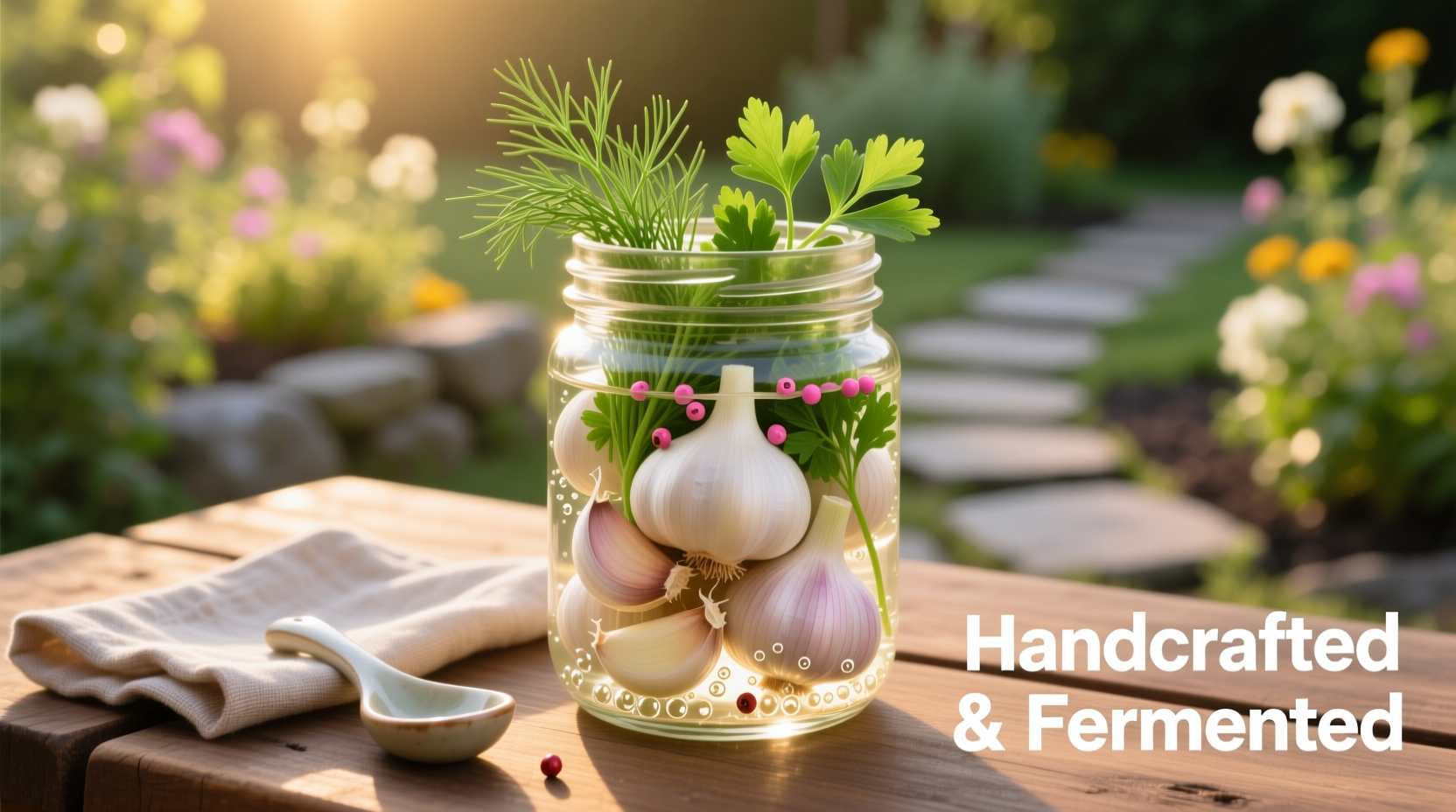The Magic Transformation: Why Garlic Benefits from Pickling
Raw garlic contains allicin, the compound responsible for its pungent flavor and health properties. When submerged in vinegar-based brine, a remarkable chemical transformation occurs. The acidic environment denatures allicin into milder compounds while preserving garlic's beneficial organosulfur compounds. According to research from the National Center for Biotechnology Information, this process maintains approximately 85% of garlic's antioxidant capacity while significantly reducing its harshness.
Step-by-Step Pickling Process for Perfect Results
Creating professional-quality pickled garlic at home requires precision with three critical elements: garlic selection, brine composition, and proper sterilization. Start with firm, plump garlic bulbs free from blemishes—smaller cloves pickle more evenly than large ones. Separate cloves but leave skins intact to prevent mushiness during processing.
For the brine, combine equal parts distilled white vinegar and water with 1 tablespoon pickling salt per cup of liquid. Optional flavor enhancers include 1 teaspoon black peppercorns, 2 dried chilies, or fresh herbs like rosemary sprigs per jar. Bring the mixture to a rolling boil, then pour over garlic cloves in sterilized mason jars, leaving ½ inch headspace.
| Preparation Method | Flavor Profile | Shelf Life | Best Culinary Uses |
|---|---|---|---|
| Quick Refrigerator Pickle | Sharp vinegar notes, subtle garlic | 3-4 weeks | Salads, sandwiches, quick garnishes |
| Traditional Canned Pickle | Complex, mellow garlic, balanced acidity | 6-12 months | Main dishes, sauces, long-term storage |
| Honey-Garlic Pickle | Sweet-tart balance, floral notes | 4-6 months | Charcuterie boards, cheese pairings |
Avoiding Common Pickling Mistakes
Many home preservers encounter issues with texture and safety. The most frequent error involves using iodized salt, which causes discoloration and cloudiness in the brine. Always choose pickling or kosher salt for crystal-clear results. Another critical mistake is improper headspace—too little space creates pressure during processing, while too much allows air pockets that promote spoilage.
For safe preservation, follow the National Center for Home Food Preservation guidelines: process pint jars in a boiling water bath for 10 minutes at sea level, adding 1 minute for each 1,000 feet of elevation. Properly processed jars should seal with an audible 'pop' and remain concave when pressed.

Culinary Applications That Shine
Pickled garlic's versatility extends far beyond simple garnishes. When thinly sliced, it adds bright acidity to grain bowls and roasted vegetable salads. Whole cloves make impressive cocktail onions for martinis, while minced pickled garlic transforms mayonnaise into a sophisticated aioli. For Mediterranean dishes, add whole cloves to olive oil-based salad dressings where they'll slowly infuse the oil with subtle garlic notes.
Chef Marco Pierre White's technique of adding pickled garlic to béarnaise sauce demonstrates professional applications—simply substitute 2 tablespoons of pickled garlic juice for part of the vinegar in the classic recipe. This variation maintains the sauce's emulsion while adding complexity that balances rich meats like steak or lamb.
Storage Guidelines and Shelf Life Expectations
Refrigerator-pickled garlic maintains optimal flavor for 3-4 weeks, while properly canned versions last 6-12 months in a cool, dark pantry. Once opened, all pickled garlic should be refrigerated and consumed within 2 months. Watch for signs of spoilage including cloudiness, mold, or bulging lids—discard immediately if any appear.
For extended shelf life without canning, try this chef's trick: after pickling, transfer cloves to clean jars with fresh vinegar. This 're-pickling' refreshes the brine's acidity, extending refrigerator life by another month while maintaining crisp texture.
Flavor Pairing Principles
Understanding flavor chemistry helps maximize pickled garlic's potential. Its acidic profile complements fatty foods like pork belly or duck confit by cutting through richness. The mellow garlic notes enhance umami flavors in mushrooms and aged cheeses—try pairing with Manchego or Pecorino on a charcuterie board.
For creative applications, consider these pairings:
- Asian cuisine: Substitute for fresh garlic in stir-fries (add at the end to preserve texture)
- Middle Eastern dishes: Blend with tahini for a twist on traditional hummus
- Mexican food: Chop finely and mix into pico de gallo for added complexity
- Italian preparations: Add whole cloves to tomato sauces during the last 10 minutes of cooking











 浙公网安备
33010002000092号
浙公网安备
33010002000092号 浙B2-20120091-4
浙B2-20120091-4